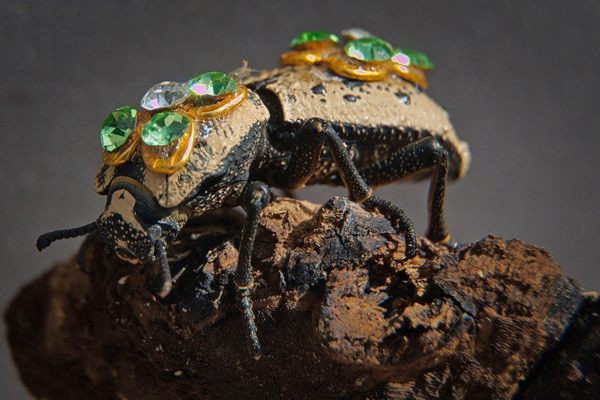In England, Certain Royal Appointees Get to Carry Special Rods and Wands
They’re all different colors, too.

In honor of the royal wedding of Prince Harry and Meghan Markle, this week we’re telling the stories of some of the United Kingdom’s oldest and oddest traditions. Previously: Why the queen owns all the swans in England, the “pricking ceremony”
Earlier this year, the Queen appointed Sarah Clarke to fill the office of Usher of the Black Rod, the first time in more than 650 years a woman has held this job. When Clarke entered Parliament, she wore a tailored black coat, a frilled shirt, and a medallion around her neck. As she walked, back straight, to her seat, she held the symbol of her office—a black wand, three-and-a-half feet long, with gold ornaments—over her shoulder.
Back in the 14th century, Edward III created the Gentleman Usher of the Black Rod in part to keep check on the boisterous knights of the Order of the Garter, which still exists today. As the oldest society of knights in Britain, with a limited number of slots available, the Garter has since become the most prestigious chivalric order. The Black Rod acted as an aide to the king and could arrest or summon knights. The rod was a symbol of his power, “being used only for those who offend against and act contrary to the statutes and ordinance of this noble order,” as one 19th-century guide put it.

Today, the Black Rod usually uses the rod just once a year, to rap on the door of Parliament before the Queen arrives to give her annual address. During this ritualized occasion, another member of the Queen’s house, the Vice-Chamberlain, is held “hostage” at Buckingham Palace. Ever since the 17th century, when King Charles I and the legislature were at odds (the king was, eventually, executed), the monarch has taken precautions when visiting Parliament. For a few hours, the Vice-Chamberlain, who’s also a member of Parliament, stays under guard at Buckingham Palace (although reportedly both wandering and gin-and-tonics are allowed). The Vice-Chamberlain, too, brings along a ceremonial “wand of office”—a white staff, which, according to custom, the Queen is supposed to break into two pieces when the Vice-Chamberlain steps down. The Lord Chamberlain also has a ceremonial white staff, which is supposed to be broken over the grave of the monarch when he or she dies.
These fancy sticks—call them rods, wands, or staffs—are part of the long-standing tradition. The Queen herself has multiple scepters and rods among the royal jewels. In the United Kingdom, the Black Rod is the oldest and most prominent of the rod-bearing officials. But they have proliferated since the 14th century. British monarchs have also appointed White Rods, Green Rods, Blue Rods, Scarlet Rods, and Purple Rods.
While the black rod is made of ebony and the white rod of silver, the more colorful rods are enameled; all are topped with golden ornaments, of specified design. Each Rod is associated with a particular chivalric order; the Scarlet Rod, for instance, is the usher for the Order of the Bath, named for the purification ritual once associated with knighthood. These positions do have ceremonial and some administrative duties that accompany them. But one of the great perks must be the secret joy of getting to carry a special stick around in public.






















Follow us on Twitter to get the latest on the world's hidden wonders.
Like us on Facebook to get the latest on the world's hidden wonders.
Follow us on Twitter Like us on Facebook